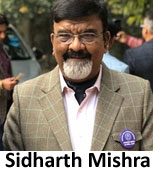Nothing endorses the charges often levelled against the Congress party being turned into a family limited company better than the National Herald case. The Indian media history is replete with publications which endorsed an ideological or a social cause.
Much before Jawaharlal Nehru founded the Associated Journals Limited in 1937, to publish National Herald in English, Navjeevan in Hindi and Quami Awaz in Urdu, freedom fighters had maintained tradition of debating and protesting through media platforms, which then was limited to print. As historian Bipan Chandra mentions in his seminal work India’s Struggle for Independence, “Nearly all the major political controversies of the day were conducted through the Press. It also played institutional role of opposition to the Government. Almost every act and every policy of the Government was subjected to sharp criticism.”
Even the British publications of the pre-Independence period were very clear about ideological bias in the favour of imperial rule in the country. Mahatma Gandhi make a very pertinent mention of it in his autobiography My Experiments With Truth. Mentioning about a meeting with one Mr Chesney Junior, then editor of The Pioneer, at that time under British ownership, Gandhi writes, “He promised to notice in his paper anything that I might write but added that he could not promise to endorse all the Indian demands, inasmuch as he was bound to understand and give due weight to the viewpoint of the Colonials as well.”



